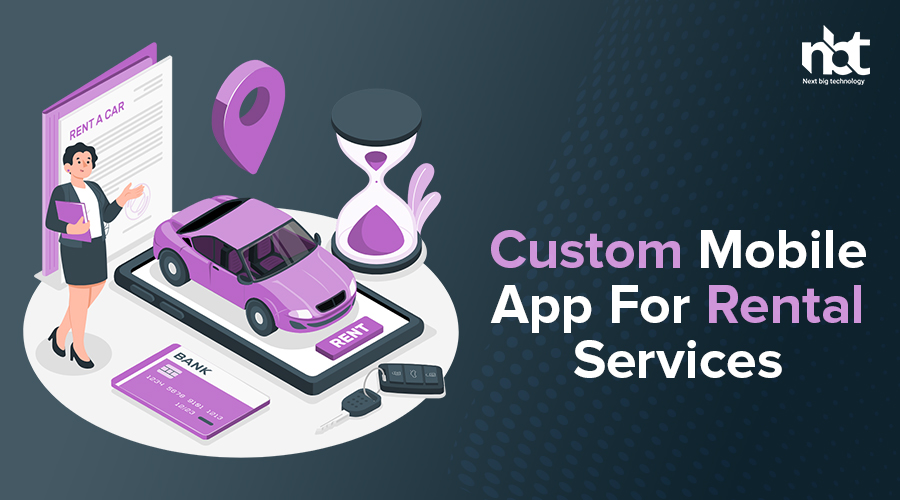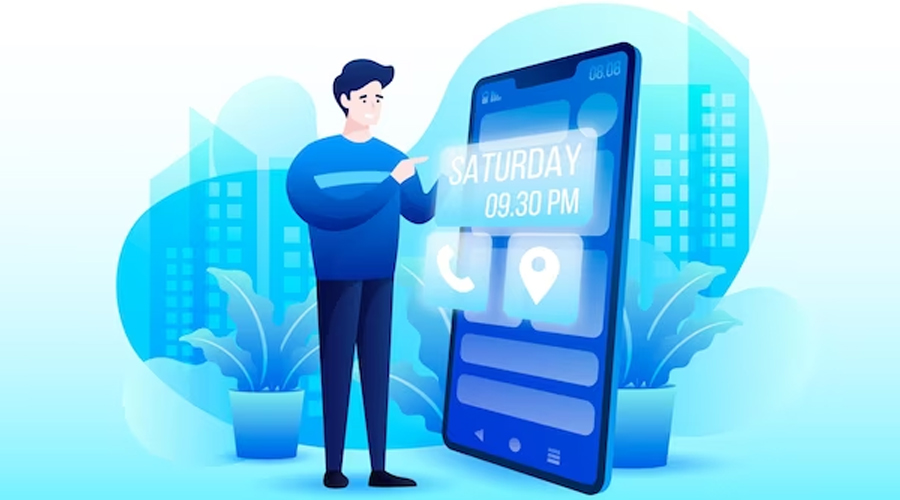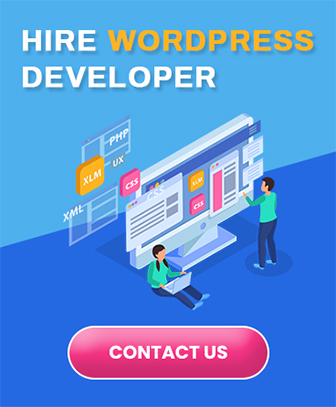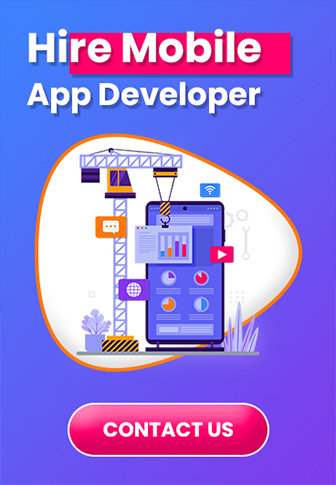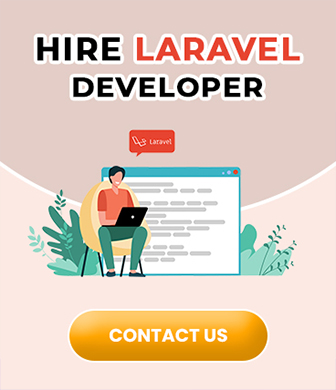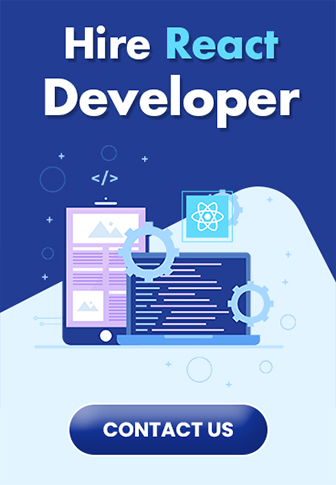Table of Contents
Introduction to Rental Service Apps
In a world where convenience and accessibility reign supreme, the emergence of rental service apps has sparked a monumental shift in how we access and utilize goods and services. These innovative mobile applications have reshaped the landscape of rental businesses, offering a seamless, user-centric approach to acquiring everything from vacation accommodations to specialized equipment and vehicles.
Redefining Convenience and Accessibility
Gone are the days of traditional rental processes laden with paperwork and time-consuming procedures. Rental service apps have ushered in an era of unparalleled convenience, placing the power to rent at our fingertips. Whether it’s a cozy weekend retreat, a rugged adventure vehicle, or specialized tools for a project, these apps empower users to explore, select, and reserve with remarkable ease.
Personalization in Rental Services
One of the defining features of rental service apps is their ability to tailor experiences to individual preferences. From suggesting ideal rentals based on past choices to offering personalized discounts and promotions, these apps create a bespoke journey for each user, enhancing satisfaction and engagement.
Seamlessness in Transactions
Facilitating seamless transactions is a cornerstone of rental service apps. With integrated payment gateways and secure transaction protocols, users can complete bookings and payments effortlessly. This not only simplifies the rental process but also fosters trust and reliability among users.
Real-time Updates and Communication
The real-time updates and direct communication channels within these apps ensure users are always informed. Whether it’s about a booking confirmation, changes in availability, or instant support, the communication channels foster a sense of transparency and reliability.
Advantages for Rental Businesses
Beyond the user-centric advantages, rental service apps offer a multitude of benefits for businesses in the industry.
Streamlined Operations and Efficiency
By automating various processes such as inventory management, scheduling, and customer support, these apps streamline operations, allowing businesses to operate more efficiently. This optimization leads to better resource allocation and increased productivity.
Insights for Growth and Development
The data-driven insights garnered from user behavior analysis provide invaluable information for business growth. Understanding customer preferences and market trends helps in making informed decisions, facilitating expansion and improvement.
Building Trust and Brand Loyalty
Through seamless, user-friendly experiences, rental service apps help businesses build brand loyalty. The convenience and reliability offered through these apps nurture long-lasting relationships with customers.
The Path Forward: Embracing Custom Rental Service Apps
The development of a custom rental service app tailored to specific business needs is the next step in this technological evolution. Collaborating with experienced app developers who understand these unique requirements is crucial for success. Prioritizing user experience, security features, and scalability ensures the app’s longevity and success in the market.
Key Features and Functionalities
1. User-Friendly Interface and Seamless Navigation
The cornerstone of any successful mobile app is an intuitive user interface (UI). Implementing a clean and easy-to-navigate design ensures users can effortlessly browse through the app’s offerings, making their rental experience enjoyable from start to finish.
2. User Profiles and Account Management
Allow users to create profiles, manage personal information, track their rental history, and maintain preferences for a more personalized experience. This feature streamlines bookings and enhances user engagement by offering tailored recommendations.
3. Search and Filter Options
Enable users to search for rental items or services based on specific criteria such as location, availability, price range, and features. Advanced filtering options ensure users find exactly what they’re looking for without hassle.
4. Real-time Availability and Booking
Provide up-to-date information on the availability of rental items or services. Implement a seamless booking process that allows users to reserve their desired items in real time, eliminating double bookings and ensuring a smooth user experience.
5. Integrated Payment Gateway and Secure Transactions
Integrate secure payment gateways to facilitate transactions within the app. Offer multiple payment options and ensure stringent security measures to build trust and confidence among users.
6. Rating and Review System
Empower users to leave feedback and ratings based on their rental experiences. This two-way communication allows for transparency and helps potential renters make informed decisions.
7. Push Notifications and Alerts
Keep users informed about their bookings, order confirmations, upcoming rentals, or any changes through push notifications. Timely alerts enhance user engagement and provide a seamless communication channel.
8. Geolocation and Mapping Services
Integrate GPS functionality to enable users to locate rental items or services nearby. Interactive maps can display rental locations, making it easier for users to pick up or drop off items.
9. Inventory Management for Rental Businesses
Provide rental businesses with a comprehensive inventory management system. This feature allows them to add, update, and manage their inventory, ensuring accurate availability information for users.
10. Calendar Integration and Scheduling
Enable users to schedule rental pickups and returns based on their convenience. Integrating with their calendars helps them keep track of their rental schedules.
11. Customer Support and Help Desk
Include a dedicated customer support section within the app. Users should have access to FAQs, chat support, or a helpline to address any queries or concerns they may have during the rental process.
12. Offline Mode and Sync Functionality
Incorporate an offline mode that allows users to access certain features even when they don’t have an internet connection. Implement a sync feature that updates information once the device is back online.
13. Customizable Notifications and Preferences
Allow users to customize their notification preferences, choosing what type of alerts they wish to receive. Providing options for preferred communication methods enhances the user experience.
14. Analytics and Reporting for Business Insights
Provide rental businesses with analytics and reporting tools to gain insights into user behavior, popular rental items, peak booking times, and more. These insights inform business decisions and strategies.
15. Social Media Integration
Enable users to share their rental experiences or favorite items/services on social media platforms directly from the app. Social integration expands the app’s reach and encourages user engagement.
16. Multi-language and Accessibility Features
Consider a multi-language support system to cater to a diverse user base. Implement accessibility features to ensure the app is usable by individuals with disabilities, fostering inclusivity.
17. Referral Programs and Loyalty Rewards
Encourage user engagement and retention by offering referral programs and loyalty rewards. Users can earn rewards or discounts for referring friends or being frequent renters.
18. Customizable Pricing and Discounts
Enable rental businesses to set dynamic pricing based on demand, seasons, or special occasions. Offer discounts or promotional codes to incentivize bookings.
19. Integration with IoT and Smart Devices
Explore integration with IoT devices or smart locks for seamless access to rental items. This futuristic approach enhances convenience and security for users.
20. Feedback Analysis and Continuous Improvement
Implement systems to gather, analyze, and act upon user feedback regularly. Continuous improvement based on user suggestions ensures the app remains relevant and user-centric.
Customization for Different Rental Niches
Custom mobile applications have revolutionized the rental service industry, offering convenience and efficiency. However, the needs of rental businesses vary across niches, necessitating specialized customization within mobile apps. Let’s explore how customization caters to distinct rental niches, from property rentals to vehicle and equipment rentals, spanning a diverse array of sectors.
1. Property Rentals
Vacation Homes and Short-Term Rentals
For property rentals, especially vacation homes and short-term accommodations, custom app customization plays a pivotal role in providing a seamless experience. Features such as interactive property maps, high-resolution image galleries, and real-time availability calendars enhance user engagement. Additionally, integration with payment gateways and secure online booking systems simplifies transactions, ensuring a smooth reservation process.
Property Management and Tenant Services
Property management apps cater to landlords and property managers, offering functionalities like maintenance request submission, rent payment processing, and lease management. Customizations include personalized dashboards for property owners to track financials and maintenance activities, alongside tenant-specific profiles for rental payments and communication.
2. Vehicle Rentals
Car Rentals and Ride-Sharing Services
In the realm of vehicle rentals, especially car rentals and ride-sharing services, app customization focuses on user convenience. Custom mobile apps streamline the booking process, allowing users to select vehicle preferences, set pick-up/drop-off locations, and access real-time vehicle availability. Integration with navigation and GPS systems aids in smooth navigation and route optimization for drivers and users alike.
Specialized Vehicle Rentals
For specialized vehicle rentals such as luxury cars, motorcycles, or RVs, customizations emphasize unique features. These include detailed vehicle specifications, customizable rental periods, and tailored insurance options. User reviews and recommendations enhance trust and facilitate informed decision-making for customers seeking specialized vehicles.
3. Equipment Rentals
Construction and Industrial Equipment
Custom mobile apps for equipment rentals in construction and industrial sectors focus on robust inventory management. Features like equipment tracking, maintenance schedules, and safety guidelines are integral. Moreover, integrating QR code or barcode scanning facilitates efficient check-in and check-out processes for equipment, optimizing operational workflows.
Event and Party Rentals
For event and party equipment rentals, customization revolves around user-friendly interfaces. Visual catalogs showcasing diverse inventory, package customization options, and delivery scheduling features cater to event planners and individuals hosting gatherings. Integration with event calendars and reminders ensures timely equipment reservations.
4. Miscellaneous Rental Niches
Sports and Recreation Equipment
Custom apps for sports and recreation rentals emphasize ease of browsing and equipment selection. Features include equipment categorization based on sport or activity, size availability, and rental duration flexibility. Integration with social sharing options allows users to share their rental experiences, fostering a community around the rental service.
Clothing and Costume Rentals
In the realm of clothing and costume rentals, customization focuses on detailed product descriptions, size guides, and virtual try-on options. Interactive features like mix-and-match outfit suggestions or styling tips enhance user engagement. Integration with secure payment gateways and return policies builds trust and encourages repeated rentals.
Challenges and Solutions in Rental App Development
1. User Experience and Interface Design
Challenge: Crafting an intuitive, user-friendly interface that caters to various user preferences and device specifications can be complex. Balancing aesthetics with functionality poses a significant challenge.
Solution: Conduct thorough user research and usability testing to understand user behavior and preferences. Implement responsive design principles and intuitive navigation to ensure a seamless user experience across devices.
2. Data Security and Privacy
Challenge: Handling sensitive user data such as personal information, payment details, and transaction histories raises concerns about security breaches and data privacy.
Solution: Implement robust encryption techniques and comply with data protection regulations. Regular security audits and updates to ensure the app’s security protocols are up-to-date.
3. Scalability and Performance Optimization
Challenge: As the user base grows, ensuring the app can handle increased traffic without compromising performance becomes crucial. Balancing scalability with performance optimization is a constant challenge.
Solution: Employ scalable architecture from the outset and regularly optimize code for efficiency. Utilize cloud-based solutions and caching mechanisms to handle increased loads.
4. Integration with Third-Party Services
Challenge: Integrating with various third-party services such as payment gateways, location-based services, and APIs from different rental providers can result in compatibility issues and complex integrations.
Solution: Utilize standardized APIs, conduct thorough compatibility testing, and maintain clear communication channels with third-party service providers to ensure seamless integrations.
5. Managing Inventory and Availability
Challenge: Ensuring real-time updates on inventory availability and managing multiple listings can be a logistical challenge, especially for businesses with diverse offerings.
Solution: Implement robust inventory management systems synced in real-time with the app. Utilize automated notifications and scheduling algorithms to manage availability effectively.
6. Customer Support and Communication
Challenge: Providing timely and effective customer support within the app, addressing queries, and resolving issues promptly can be demanding, especially with a growing user base.
Solution: Implement in-app communication channels such as chat support or AI-driven chatbots. Offer comprehensive FAQs and tutorials to address common queries.
Solutions in Rental App Development
1. Agile Development Methodology
Employ an agile development approach, breaking down the development process into smaller iterations. Regular feedback loops and iterations allow for quicker adjustments, ensuring the app aligns closely with user needs and market demands.
2. Focus on Usability and Accessibility
Prioritize usability and accessibility throughout the design and development phases. Conduct user testing, gather feedback, and iterate designs to ensure the app caters to a wide range of users, including those with disabilities.
3. Data Security Measures
Implement stringent data security measures, including encryption, secure authentication, and regular security audits. Comply with data protection laws and guidelines to safeguard user information.
4. Cloud-Based Infrastructure
Utilize scalable and reliable cloud infrastructure to handle increased traffic and data storage needs. Cloud services offer flexibility, scalability, and cost-efficiency for rental app businesses.
5. Robust API Integrations
Adopt standardized APIs and establish clear communication channels with third-party service providers. Thoroughly test integrations to ensure compatibility and smooth functionality.
6. AI-Powered Customer Support
Leverage AI-driven chatbots or automated customer support systems to handle common queries and provide immediate assistance. Combine this with human support for complex issues, ensuring a comprehensive support system.
7. Continuous Improvement and Updates
Regularly collect user feedback and data analytics to identify areas for improvement. Implement updates and new features iteratively to keep the app relevant and engaging for users.
Technology Stack and Development Process
Technology Stack: The Foundation of App Development
In the realm of app development, a technology stack refers to a collection of tools, programming languages, frameworks, and software used to build and deploy applications. The choice of a technology stack significantly impacts the app’s performance, scalability, and overall success. Let’s dissect the primary components of a technology stack.
1. Frontend Development
a. Programming Languages
- JavaScript: Widely used for frontend development, JavaScript boasts frameworks like React, Angular, and Vue.js, enabling dynamic and interactive user interfaces.
b. Frameworks and Libraries
- React: Known for its component-based architecture, React is ideal for building reusable UI components.
- Angular: Supported by Google, Angular is a comprehensive framework suitable for large-scale applications.
- Vue.js: A progressive framework with a gentle learning curve, Vue.js offers flexibility and simplicity.
c. Tools and Platforms
- Node.js: Used for backend development, Node.js allows developers to use JavaScript for server-side scripting.
- Webpack: A module bundler that simplifies the management of application assets.
- Babel: A transpiler that converts modern JavaScript code into backward-compatible versions for broader browser compatibility.
2. Backend Development
a. Programming Languages
- Python: Known for its simplicity and versatility, Python is favored for backend development.
- JavaScript (Node.js): Enables full-stack JavaScript development, allowing seamless communication between frontend and backend.
b. Frameworks and Tools
- Express.js: A minimal and flexible Node.js web application framework used to build robust APIs.
- Django: A high-level Python framework known for its clean design and rapid development capabilities.
- Ruby on Rails: A popular framework for building web applications in Ruby, offering simplicity and convention over configuration.
c. Databases
- SQL (MySQL, PostgreSQL): Relational databases offering structured data storage and powerful querying capabilities.
- NoSQL (MongoDB, CouchDB): Non-relational databases suitable for handling unstructured or semi-structured data.
3. Database and Storage
a. Cloud Services
- Amazon Web Services (AWS): Offers a wide range of cloud-based services including databases (RDS, DynamoDB), storage (S3), and computing (EC2).
- Google Cloud Platform (GCP): Provides scalable cloud infrastructure, databases (Firestore, BigQuery), and machine learning services.
b. Data Storage Solutions
- Firebase: A mobile and web application development platform offering real-time database services.
- Redis: In-memory data structure store used as a caching layer to improve application performance.
4. DevOps and Deployment
a. Version Control
- Git: A distributed version control system enabling collaboration among developers and efficient code management.
b. Continuous Integration/Continuous Deployment (CI/CD)
- Jenkins: An open-source automation server used for building, testing, and deploying applications.
- CircleCI: Provides CI/CD pipelines for automating development workflows.
c. Containerization and Orchestration
- Docker: A containerization platform enabling applications to run in isolated environments.
- Kubernetes: An open-source system for automating deployment, scaling, and management of containerized applications.
The Development Process
1. Requirement Analysis and Planning
Understanding client needs, defining project scope, and setting milestones.
2. Design and Prototyping
Creating wireframes, UI/UX design, and building prototypes for visualizing the app’s look and feel.
3. Development
Writing code using chosen technologies, implementing features, and ensuring code quality through testing.
4. Testing and Quality Assurance
Conducting various tests including unit testing, integration testing, and user acceptance testing to ensure the app functions flawlessly.
5. Deployment and Maintenance
Deploying the app on servers or cloud platforms, monitoring its performance, and providing ongoing maintenance and updates.
Market Trends and Future Prospects
Market Trends in Custom Mobile Apps for Rental Services
1. Increased Demand for Customization
Customers now seek personalized experiences. Rental services are adapting by offering customizable options through mobile apps. Users can tailor preferences, from pick-up locations to specific features, enhancing their overall rental experience.
2. Integration of AI and Machine Learning
Artificial Intelligence and Machine Learning technologies are reshaping the rental industry. Apps analyze user behavior to suggest tailored options and predict demand, improving inventory management and service offerings.
3. Contactless Rentals
Driven by the COVID-19 pandemic, the demand for contactless transactions and services surged. Mobile apps enable users to complete entire rental processes—from booking to payment—without physical contact, ensuring safety and convenience.
4. IoT and Smart Devices Integration
The Internet of Things (IoT) is revolutionizing the rental sector. Integration with smart devices allows remote access, monitoring, and control of rented assets through mobile apps, enhancing convenience and security.
5. Blockchain for Transparency and Security
Blockchain technology is gaining traction for its potential in ensuring transparency and security in rental transactions. Implementing blockchain within mobile apps can offer immutable records and secure payment methods.
Future Prospects in Custom Mobile Apps for Rental Services
1. Enhanced User Experience
Future apps will focus on providing a seamless, intuitive, and immersive user experience. Augmented Reality (AR) might enable users to visualize rentals before booking, enhancing decision-making processes.
2. Predictive Analytics for Demand Forecasting
Further integration of AI and Machine Learning will enable more accurate demand forecasting. Rental businesses can optimize inventory and services, reducing idle resources and meeting customer needs effectively.
3. Sustainability and Eco-Friendly Rentals
With increased environmental awareness, apps may include filters for eco-friendly rentals. Electric vehicles, sustainable homes, and equipment might gain prominence, aligning with users’ sustainability goals.
4. Blockchain for Secure and Transparent Transactions
Widespread adoption of blockchain technology within apps will ensure secure and transparent transactions. Smart contracts could automate rental agreements, eliminating intermediaries and reducing fraud risks.
5. Enhanced Security and IoT Integration
Future apps will prioritize robust security measures and expand IoT integration. Real-time monitoring, geofencing, and remote access will become standard features, ensuring safety and control over rented assets.
Success Stories and Case Studies
1. Airbnb: Pioneering the Homestay Experience
Background: Founded in 2008, Airbnb revolutionized the hospitality industry by connecting travelers with unique lodging options. Initially a web-based platform, Airbnb strategically invested in developing a mobile app to enhance user experience and accessibility.
Success Highlights:
- Global Reach: The Airbnb app enabled users to discover and book accommodations seamlessly from their mobile devices, contributing to its global success.
- User-Friendly Interface: The intuitive design of the app simplified the booking process, making it easy for both hosts and guests to navigate and manage reservations.
- Real-time Communication: The app facilitated instant communication between hosts and guests, fostering trust and ensuring a smooth rental experience.
2. Enterprise Rent-A-Car: Driving Customer Convenience
Background: As a leading car rental company, Enterprise Rent-A-Car recognized the need to adapt to changing consumer preferences. The company invested in a custom mobile app to streamline the car rental process.
Success Highlights:
- Efficient Booking: The app allowed users to reserve vehicles, specify pickup locations, and manage bookings on-the-go, reducing wait times at rental counters.
- Digital Check-In/Check-Out: Enterprise’s app introduced digital check-in and check-out features, minimizing paperwork and expediting the rental process.
- Loyalty Program Integration: The app seamlessly integrated with Enterprise’s loyalty program, incentivizing repeat business and fostering customer loyalty.
3. Bike Share Programs: The App-Driven Cycling Trend
Background: Cities worldwide have embraced bike-sharing programs to promote sustainable transportation. Mobile apps have played a crucial role in making these programs accessible and user-friendly.
Success Highlights:
- Location-Based Services: Apps for bike-sharing programs use GPS technology to help users locate nearby bike stations and available bicycles.
- Secure Transactions: Integrated payment gateways ensure secure transactions, allowing users to easily rent and return bikes without the need for physical currency.
- Community Engagement: Some apps incorporate social features, allowing users to share their cycling experiences, recommend routes, and build a community of like-minded individuals.
Case Studies: Exemplifying Custom Mobile App Solutions
1. Car Rental App for a Global Fleet
Challenge: A multinational car rental company faced challenges in managing a diverse fleet of vehicles efficiently. The manual booking process was time-consuming, and customers expressed dissatisfaction with the lack of real-time updates.
Solution: The company partnered with a mobile app development team to create a custom app. The app integrated with the company’s reservation system, allowing users to:
- View Fleet Availability: Real-time updates on vehicle availability, ensuring customers could make informed decisions.
- Paperless Transactions: Digital contracts and electronic signatures streamlined the rental process, reducing paperwork.
Results:
- Increased Efficiency: The app significantly reduced the time required for both customers and staff to complete transactions.
- Enhanced Customer Satisfaction: Real-time updates and a user-friendly interface led to a notable increase in customer satisfaction scores.
2. Vacation Home Rental Platform: From Listing to Booking
Challenge: A vacation home rental platform faced stiff competition and needed a unique selling proposition to stand out. The lack of a dedicated mobile app hindered user engagement and convenience.
Solution: The platform invested in a custom mobile app that offered:
- 360-Degree Property Views: High-resolution images and virtual tours provided users with a comprehensive view of rental properties.
- In-App Communication: A messaging feature allowed seamless communication between hosts and guests, enhancing the booking experience.
Results:
- Market Differentiation: The app’s unique features set the platform apart from competitors, attracting a new segment of users.
- Increased Bookings: The convenience of in-app communication and property visualization contributed to a surge in bookings.
3. Construction Equipment Rental App: Streamlining Operations
Challenge: A construction equipment rental company faced challenges in managing a diverse inventory of machinery. Manual processes led to delays, affecting project timelines.
Solution: The company collaborated with app developers to create a custom solution featuring:
- QR Code Scanning: Each piece of equipment was tagged with a QR code, enabling quick and accurate inventory management.
- Maintenance Scheduling: The app included a maintenance module to schedule and track equipment servicing.
Results:
- Efficient Operations: The app streamlined inventory management, reducing the time required to locate and allocate equipment.
- Preventive Maintenance: Proactive scheduling of maintenance tasks minimized equipment downtime, improving overall operational efficiency.







